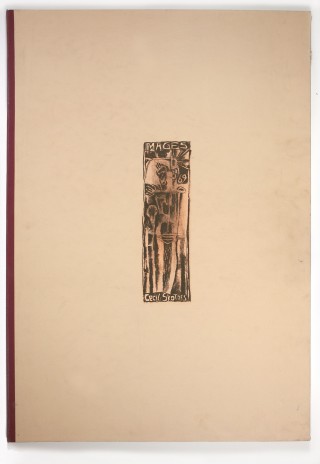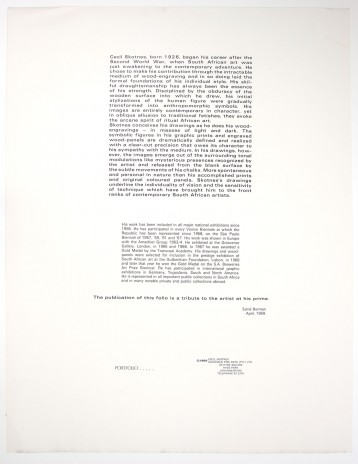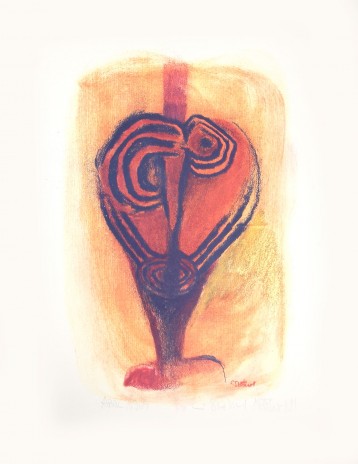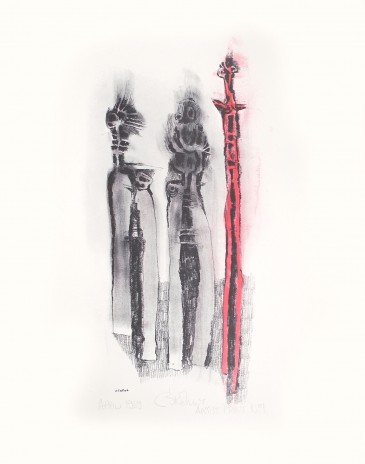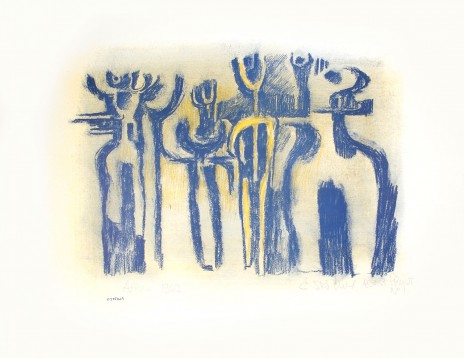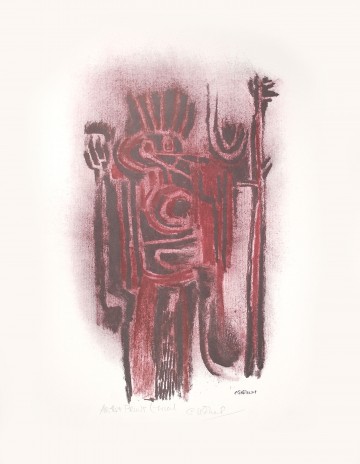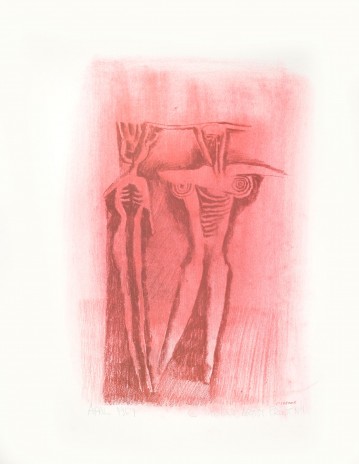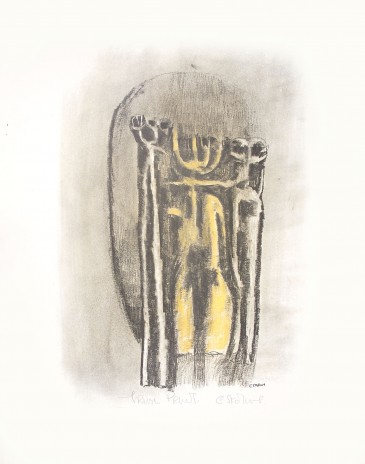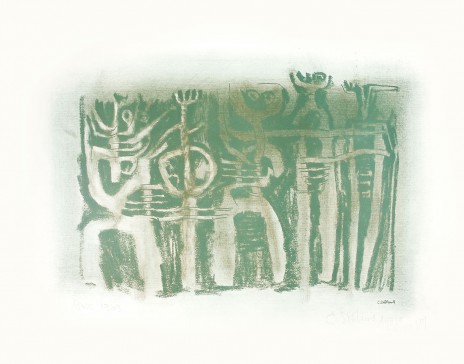‘Cecil Skotnes, born 1926, began his career after the Second World War, when South African art was just awakening to the contemporary adventure. He chose to make his contribution through the intractable medium of wood-engraving and in so doing laid the formal foundations of his individual style. His skilful draughtsmanship has always been the essence of his strength. Disciplined by the obduracy of the wooden surface into which he drew, his initial stylizations of the human figure were gradually transformed into anthropomorphic symbols. His images are entirely contemporary in character, yet in oblique allusion to traditional fetishes, they evoke the arcane spirit of ritual African art.
Skotnes conceives his drawings as he does his wood engravings – in masses of light and dark. The symbolic figures in his graphic prints and engraved wood-panels are dramatically defined and realized with a clear-cut precision that owes its character to his sympathy with the medium. In his drawings, however, the images emerge out of the surrounding tonal modulations like mysterious presences recognized by the artist and released from the blank surface by the subtle movements of his chalks. More spontaneous and personal in nature than his accomplished prints and original coloured panels, Skotnes’s drawings underline the individuality of vision and the sensitivity of technique which have brought him to the front ranks of contemporary South African artists.
His work has been included in all major national exhibitions since 1956. He has participated in every Venice Biennale at which the Republic has been represented since 1958, on the Sao Paulo Biennali of 1957, ’59, ’61 and ’67. His work was shown in Europe with the Amadlozi Group 1963/4. He exhibited at the Grosvenor Gallery, London, in 1965 and 1966. In 1967 he was awarded a Gold Medal by the Transvaal Academy. His drawings and wood-panels were selected for inclusion in the prestige exhibition of South African art at the Gulbenkian Foundation, Lisbon, in 1968 and later that year he won the Gold Medal on the S.A. Breweries Art Prize Biennial. He has participated in international graphic exhibitions in Germany, Yugoslavia, South and North America. He is represented in all important public collections in South Africa and in many notable private and public collections abroad.
The publication of this folio is a tribute to the artist at his prime.
Esmé Berman
April, 1969.’

